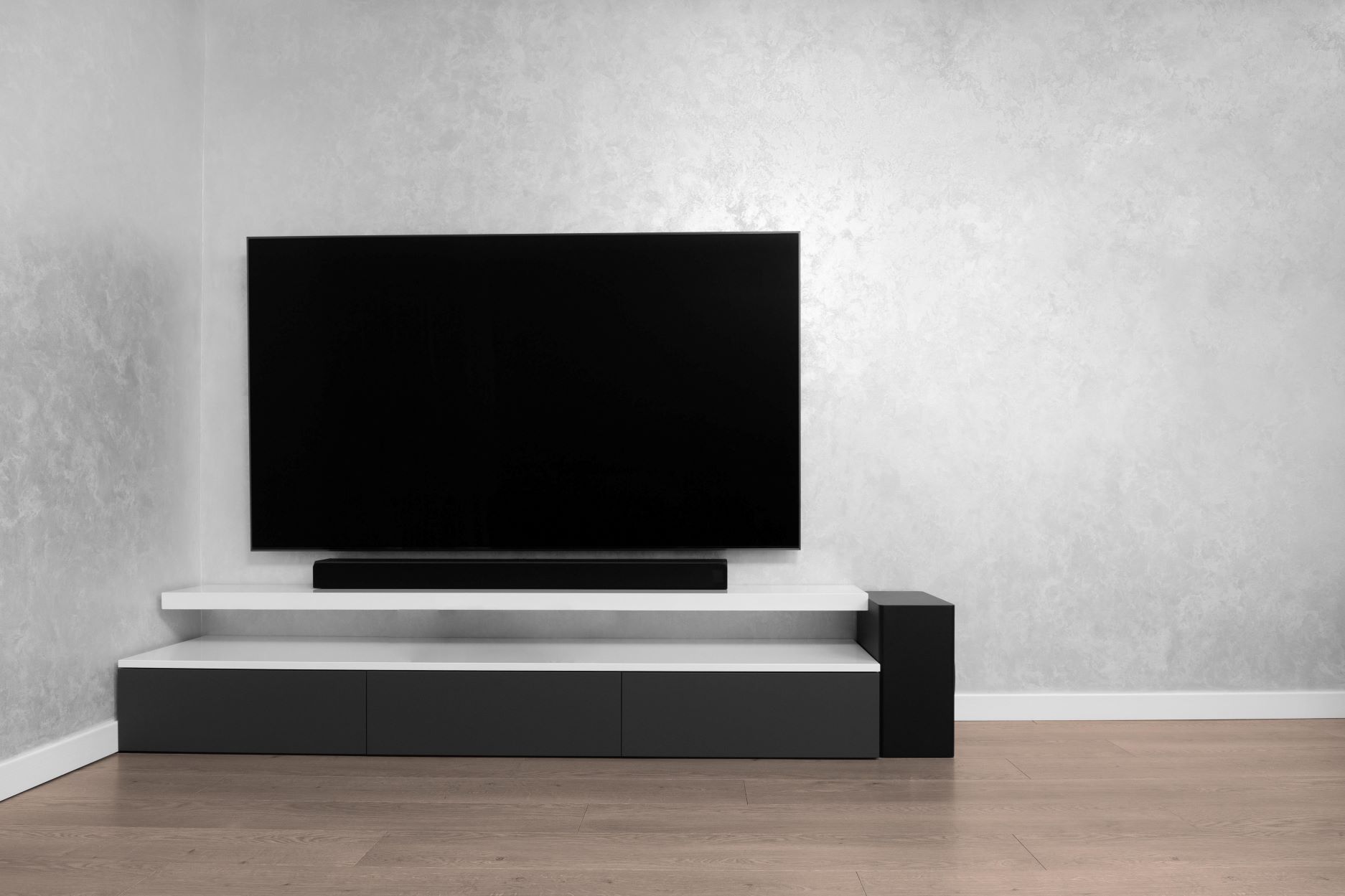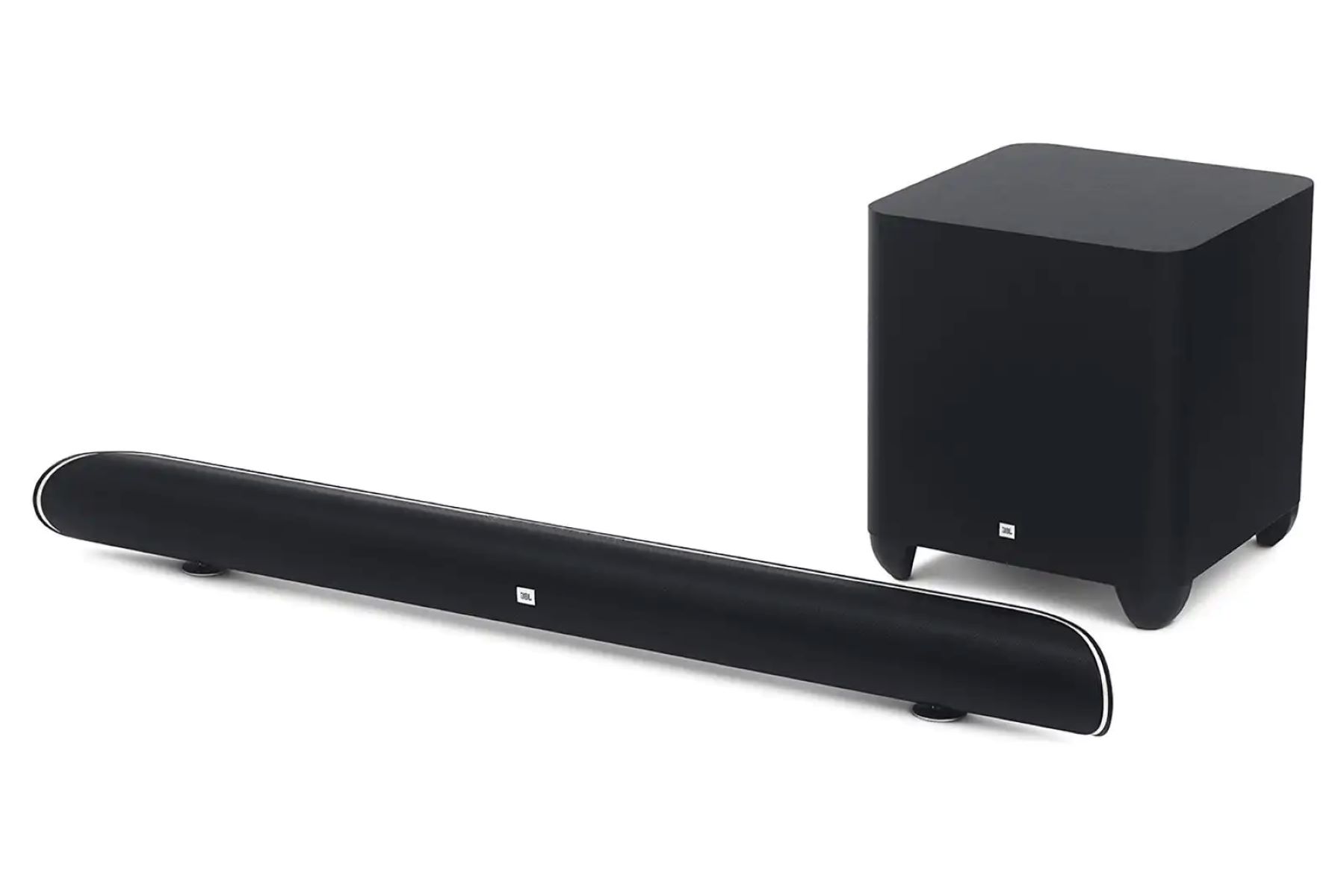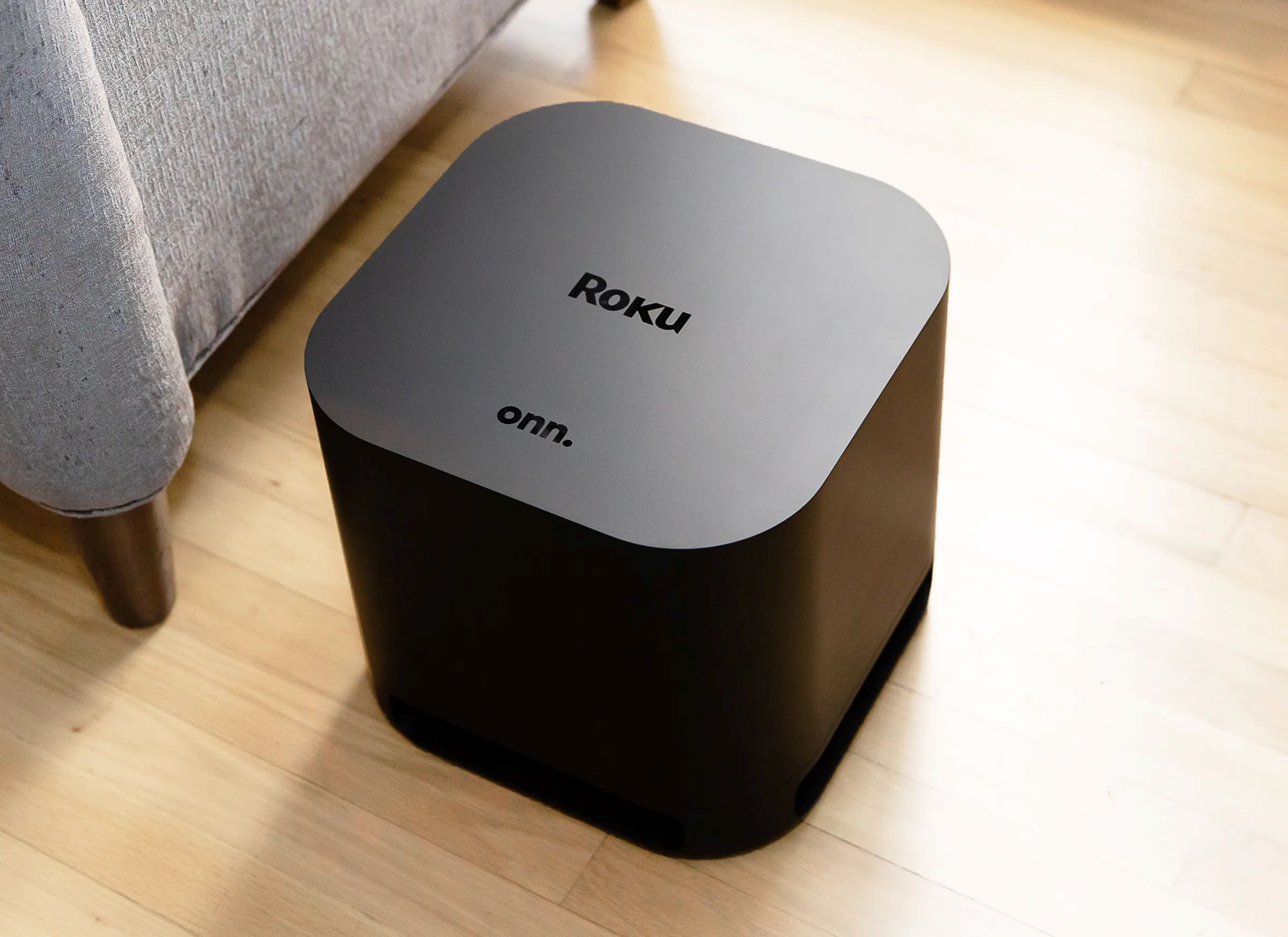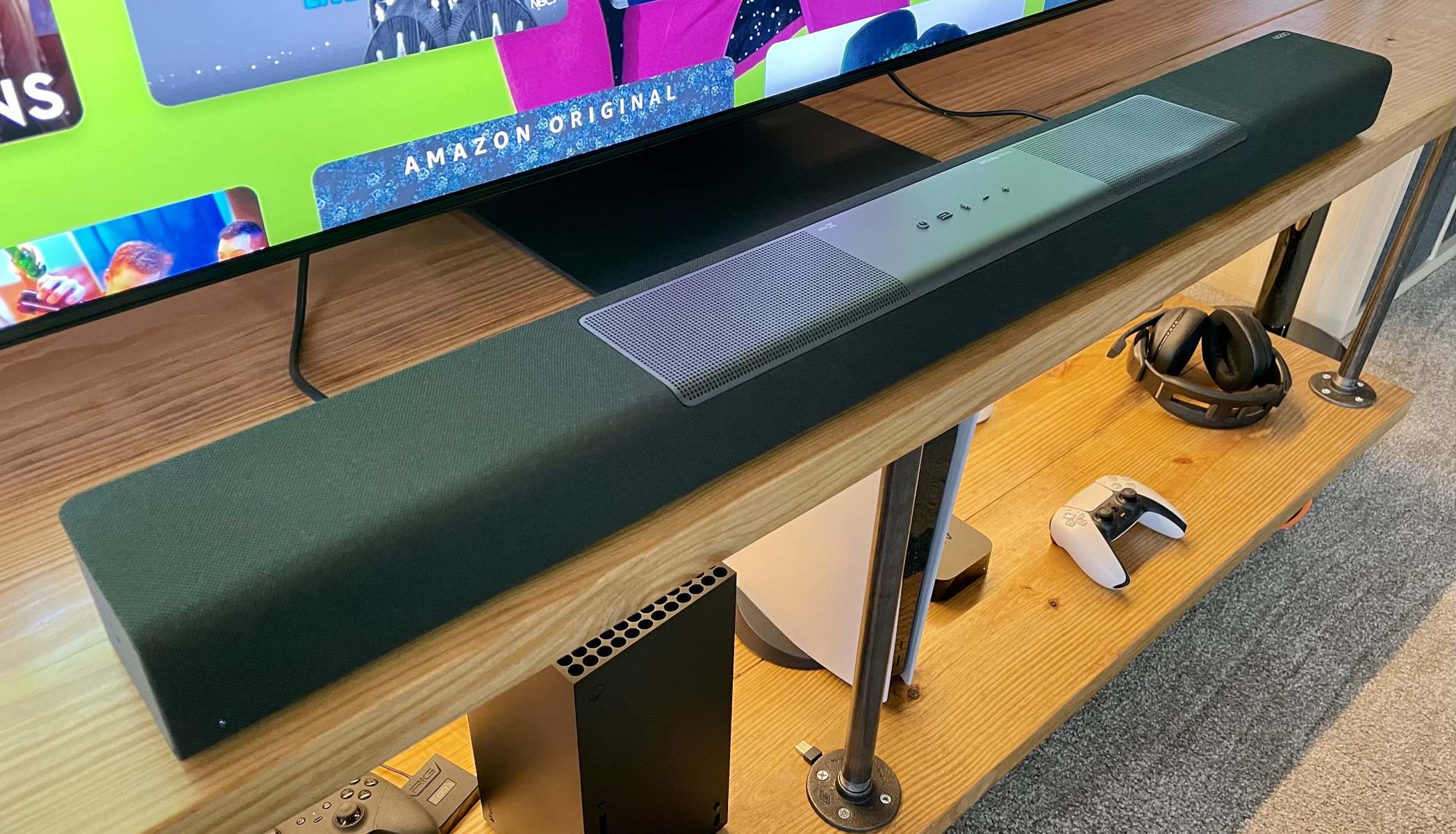Home>Devices & Equipment>Subwoofer>Where To Put Soundbar Subwoofer


Subwoofer
Where To Put Soundbar Subwoofer
Published: January 20, 2024
Looking for the ideal placement of your soundbar subwoofer? Discover the best spots to position your subwoofer for optimal audio performance.
(Many of the links in this article redirect to a specific reviewed product. Your purchase of these products through affiliate links helps to generate commission for AudioLover.com, at no extra cost. Learn more)
Table of Contents
- Introduction
- Importance of Subwoofer Placement
- Factors to Consider before Placing Soundbar Subwoofer
- Ideal Placement Options for Subwoofer
- Placing Subwoofer in Front of the Room
- Placing Subwoofer in a Corner
- Placing Subwoofer at the Side of the Room
- Placing Subwoofer at the Back of the Room
- Additional Tips for Subwoofer Placement
- Conclusion
Introduction
Welcome to the world of immersive audio! If you’re in search of that deep, rumbling bass that gives movies and music that extra oomph, then a subwoofer is an essential addition to your audio setup. However, simply purchasing a subwoofer isn’t enough; proper placement plays a crucial role in maximizing its performance and overall audio experience.
When it comes to subwoofer placement, there are several factors to consider. The size and shape of the room, the characteristics of the subwoofer, and even the furnishings in the space can significantly impact where you should position your subwoofer for optimal results.
In this article, we will explore the importance of subwoofer placement and provide you with some useful tips and guidelines to help you find the ideal location for your soundbar subwoofer. By the end, you’ll be equipped with the knowledge to make informed decisions about where to place your subwoofer to achieve the best audio performance.
Importance of Subwoofer Placement
The placement of your subwoofer can significantly impact the overall sound quality and performance of your audio system. Here are a few reasons why subwoofer placement is crucial:
- Bass response: The subwoofer is responsible for producing low-frequency sounds, including deep bass notes. Placing it in the right location can help optimize the bass response and ensure a balanced and immersive audio experience.
- Even sound distribution: Proper subwoofer placement helps to distribute the low-frequency sounds evenly throughout the room. This prevents any “hot spots” or areas where the bass is overly emphasized or lacking, resulting in a more seamless and enjoyable listening experience.
- Minimizing distortion: Placing the subwoofer in an appropriate location minimizes unwanted distortion, resonances, and vibrations, which can negatively impact the audio quality and cause an unpleasant listening experience. By finding the right placement, you can optimize the subwoofer’s performance and reduce distortion.
- Maintaining cohesion with other speakers: Integrating the subwoofer seamlessly with your soundbar or other speakers is essential to create a cohesive audio experience. Proper placement ensures that the subwoofer complements the soundbar and blends in with the other speakers to deliver a uniform and well-balanced soundstage.
By understanding the importance of subwoofer placement, you can make informed decisions to optimize your audio system and ensure an immersive and high-quality audio experience. Next, let’s explore the factors to consider before placing your soundbar subwoofer.
Factors to Consider before Placing Soundbar Subwoofer
Before you start positioning your soundbar subwoofer, it’s important to consider a few key factors that can influence its placement:
- Room size and shape: The dimensions and configuration of your room play a vital role in determining the optimal placement for your subwoofer. Large rooms may require more strategic placement to ensure even bass distribution, while smaller rooms may have more limited options.
- Room furnishings: The presence of furniture and other objects in your room can impact the acoustics and resonance. Consider the layout of your room and try to avoid placing the subwoofer in a position where it may be obstructed by furniture or cause unwanted vibrations.
- Speaker layout: Understanding the placement of your soundbar and other speakers is essential. The subwoofer should ideally be positioned in a way that complements the soundbar and other speakers, creating a cohesive and immersive audio experience.
- Listening position: Take into consideration the location where you will primarily be seated and listening to your audio system. The subwoofer should be placed in a position that provides optimal bass response and minimizes any potential distortions or imbalances.
- Acoustics: Every room has unique acoustic properties that can affect how sound waves interact and propagate. Consider the impact of wall materials, ceiling height, flooring, and any acoustic treatment you may have applied to the room. These factors can influence subwoofer placement and potential resonances.
- Personal preferences: While there are general guidelines for subwoofer placement, personal preferences can also play a role. Some listeners may prefer a more pronounced bass response, while others may prefer a more balanced and neutral audio experience. Take your own sonic preferences into account when positioning your subwoofer.
By considering these factors, you can make informed decisions about where to place your soundbar subwoofer and optimize its performance within your specific room and listening environment. In the next section, we will explore some ideal placement options for your subwoofer to help you achieve the best audio experience.
Ideal Placement Options for Subwoofer
When it comes to placing your soundbar subwoofer, there are a few ideal options to consider. Remember that these options may vary depending on your specific room and personal preferences:
- Placing the Subwoofer in Front of the Room: One common placement option is to position the subwoofer in the front of the room, either directly below or beside the soundbar. This placement can help create a centralized and immersive bass experience, especially when watching movies or listening to music from a primary seating area.
- Placing the Subwoofer in a Corner: Another option is to place the subwoofer in a corner of the room. Corner placement can enhance bass response and create a more impactful low-frequency experience. Experiment with different corners to find the one that provides the best balance of bass and overall sound quality.
- Placing the Subwoofer at the Side of the Room: If your room layout allows, consider placing the subwoofer at the side of the room. This can help balance the sound distribution and minimize any potential resonances that may occur with corner placement. Adjust the distance from the wall and experiment with positioning to find the sweet spot.
- Placing the Subwoofer at the Back of the Room: In some cases, placing the subwoofer at the back of the room can provide a unique audio experience. This placement option can help create a sense of depth and dimension in the low-frequency range. However, be cautious as it may not work well in all room configurations, so experimentation is key.
Remember, the ideal placement for your subwoofer may require some trial and error. Each room has unique characteristics, and factors such as room size, furnishings, and acoustics can influence the performance at different locations. Take the time to experiment with different placements to find the position that delivers the best bass response and overall audio experience for your specific setup.
Now that you have some idea about the various placement options, in the next section, we will delve into more detail about placing the subwoofer in front of the room.
Placing Subwoofer in Front of the Room
One of the most common placement options for the soundbar subwoofer is in the front of the room, either directly below or beside the soundbar. This placement is popular because it can create a centralized and immersive bass experience, especially when watching movies or listening to music from a primary seating area.
When placing the subwoofer in front of the room, consider the following tips:
- Center positioning: If you have a dedicated center channel speaker, such as a soundbar, it’s ideal to position the subwoofer directly below or beside it. This helps to maintain the coherence and synergy between the speakers, providing a more immersive audio experience.
- Distance from the wall: Leave some space between the subwoofer and the wall to prevent any potential vibrations and to allow for proper bass dispersion. Start by positioning the subwoofer a few inches away from the wall, and adjust accordingly to find the sweet spot that delivers optimal bass response.
- Experiment with placement: Try different locations in the front of the room to find the best spot for your subwoofer. Move it side to side or a bit closer or farther away from the soundbar to gauge the impact on bass response. Take note of how the placement affects the overall sound balance and adjust accordingly.
- Consider room size: The size of your room can influence subwoofer placement. In larger rooms, placing the subwoofer closer to the soundbar may help create a more cohesive and balanced soundstage. In smaller rooms, you may have more flexibility to experiment with placement options.
Placing the subwoofer in front of the room is a popular choice as it allows for a centralized bass experience and works well in many room configurations. However, every room is unique, so make sure to experiment with different positions and distances to find the optimal placement that suits your specific space and desired audio experience.
Next, let’s explore another placement option: placing the subwoofer in a corner for enhanced bass response.
Placing Subwoofer in a Corner
Placing the soundbar subwoofer in a corner of the room is another popular option that can enhance bass response and create a more impactful low-frequency experience. Corner placement takes advantage of the room boundaries to amplify and reinforce the bass output. Here are some tips for placing the subwoofer in a corner:
- Experiment with different corners: Not all corners in your room will produce the same bass response. Try placing the subwoofer in different corners to see which one delivers the best balance of bass and overall sound quality. This may depend on the specific room dimensions and acoustic properties.
- Adjust distance from walls: When placing the subwoofer in a corner, be mindful of its distance from the walls. Start by positioning it a few inches away from both adjacent walls to prevent any potential vibrations and ensure proper bass dispersion. Again, experimentation may be necessary to find the optimal placement.
- Avoid obstructing objects: Ensure that there are no large objects or obstacles blocking the corner where you plan to place the subwoofer. This can interfere with bass propagation and impact the overall sound quality. Keep the corner clear for better bass performance.
- Consider room acoustics: Corner placement can accentuate low frequencies, but it may also introduce potential resonances and room modes. Depending on the specific room layout, you may need to make adjustments to the subwoofer’s placement or consider implementing acoustic treatments to minimize any negative effects.
Placing the subwoofer in a corner can be an effective way to enhance bass response and create a more immersive audio experience. However, keep in mind that the corner placement may not work optimally in every room configuration. It’s essential to experiment and fine-tune the placement to achieve the desired balance and audio performance.
In the next section, we will explore an alternative placement option: positioning the subwoofer at the side of the room.
Placing Subwoofer at the Side of the Room
Placing the soundbar subwoofer at the side of the room is another option to consider when finding the ideal placement. This placement can help balance sound distribution and minimize potential resonances that may occur with corner placement. Here are some tips for placing the subwoofer at the side of the room:
- Positioning relative to the soundbar: When placing the subwoofer at the side of the room, consider its positioning relative to the soundbar or other speakers. Aim for a symmetrical setup to maintain balance and coherence in the audio performance.
- Distance from the wall: Similar to corner placement, leave some space between the subwoofer and the wall to ensure proper bass dispersion and prevent any vibrations. Experiment with different distances to find the optimal position that delivers optimal bass response.
- Avoid obstructions: Make sure there are no obstructions, such as furniture or other objects, blocking the path between the subwoofer and the listening area. This can impede bass propagation and impact the overall sound quality. Keep the area around the subwoofer clear for optimal performance.
- Consider room size: The size of your room can influence the placement of the subwoofer at the side. In larger rooms, placing the subwoofer further away from the soundbar may help create a more balanced and enveloping soundstage. In smaller rooms, you may need to position it closer to the soundbar for better integration with the other speakers.
Placing the subwoofer at the side of the room can help distribute the bass more evenly and reduce any potential resonances that may occur with corner placement. It provides an alternative option to balance the audio performance and create an immersive soundstage. Experiment with different positions and distances to find the sweet spot for your specific room and desired listening experience.
In the next section, we will explore an additional placement option: positioning the subwoofer at the back of the room.
Placing Subwoofer at the Back of the Room
Placing the soundbar subwoofer at the back of the room is an alternative placement option that can provide a unique audio experience. Positioning the subwoofer at the back can create a sense of depth and dimension in the low-frequency range. However, it’s important to proceed with caution as this placement may not work well in all room configurations. Here are some considerations for placing the subwoofer at the back of the room:
- Room layout: Assess the layout of your room to determine if placing the subwoofer at the back is feasible. This placement option generally works best in rooms with symmetrical setups and ample space between the listening area and the back wall.
- Soundbar integration: Ensure that the subwoofer complements the soundbar and other speakers in your setup. Adjust the subwoofer’s positioning and settings to achieve a seamless transition between the front and back speakers, maintaining sound coherence throughout the room.
- Experiment with placement: Test different positions along the back wall to find the optimal placement for your subwoofer. It may require some trial and error to achieve the desired balance and bass response. Consider adjusting the distance from the wall and the angle to fine-tune the audio performance.
- Consider room acoustics: Placing the subwoofer at the back of the room can introduce unique challenges related to room acoustics. Low-frequency sound waves can interact with the back wall, potentially causing resonances or standing waves. Take measures to mitigate any issues by implementing bass traps or other acoustic treatments in the room.
Placing the subwoofer at the back of the room can provide a different dimension to your audio experience by creating a sense of depth and spaciousness in the low-frequency range. However, it may not work optimally in every room configuration. Experimentation, along with consideration of room size, acoustics, and soundbar integration, is key to achieving the desired audio performance.
In the next section, we will provide some additional tips for subwoofer placement that can help you optimize the performance and enjoyment of your soundbar subwoofer.
Additional Tips for Subwoofer Placement
Now that we have explored various placement options for your soundbar subwoofer, let’s dive into some additional tips to help you optimize its performance:
- Experiment and fine-tune: Subwoofer placement is not an exact science, and it may require some experimentation to find the perfect spot. Don’t be afraid to move the subwoofer around the room, adjust its position, and listen for changes in bass response and overall sound quality.
- Consider using a subwoofer isolation pad: Placing a subwoofer isolation pad beneath the subwoofer can help reduce vibrations and prevent them from transferring to the floor or nearby objects. This can result in cleaner bass reproduction and minimize any potential disturbances.
- Utilize room correction software: Many soundbar systems and AV receivers come equipped with room correction capabilities. These software systems analyze the room’s acoustic characteristics and can help compensate for any audio anomalies or imbalances. Take advantage of these features to optimize the subwoofer’s performance in your specific room.
- Try multiple subwoofers: In larger rooms or if you desire even more impactful bass, consider using multiple subwoofers. Placing them strategically around the room can help distribute low-frequency sound more evenly and provide a more immersive listening experience.
- Take note of room boundaries: Keep in mind that walls, floors, and other room boundaries can affect bass propagation and resonance. Experiment with subwoofer placement to find a position that minimizes any undesirable effects caused by boundaries and maximizes bass response.
- Avoid placing subwoofer in a cabinet: Placing the subwoofer inside a cabinet or enclosed space can impede its ability to produce optimal bass and may result in a muffled or distorted sound. Whenever possible, place the subwoofer in an open area for the best performance.
By following these additional tips, you can fine-tune the placement of your soundbar subwoofer and optimize its performance within your specific room and listening environment. Remember that every room is unique, and what works for one setup may not work for another. Take the time to experiment and adjust until you achieve the desired bass response and overall audio experience.
Now, let’s summarize what we’ve covered in this article.
Conclusion
Proper subwoofer placement is crucial to achieving optimal sound quality and maximizing the performance of your soundbar subwoofer. By considering factors such as room size, furnishings, speaker layout, and personal preferences, you can make informed decisions about where to place your subwoofer to enhance your audio experience.
We explored various placement options, including placing the subwoofer in front of the room, in a corner, at the side of the room, and at the back of the room. Each option offers unique advantages and considerations, so it’s important to experiment and find the position that works best for your specific room and desired audio performance.
Additionally, we provided additional tips, such as fine-tuning the placement, using subwoofer isolation pads, utilizing room correction software, considering multiple subwoofers, and being mindful of room boundaries. These tips can help you further optimize the bass response and overall sound quality of your audio system.
Remember, subwoofer placement is not an exact science, and what works for one room may not work for another. Take the time to experiment, adjust, and listen to achieve the best possible audio performance for your specific setup.
With the right subwoofer placement, you can experience deep, rumbling bass that enriches your movie watching or music listening sessions, immersing you in the audio experience and bringing your entertainment to life.











